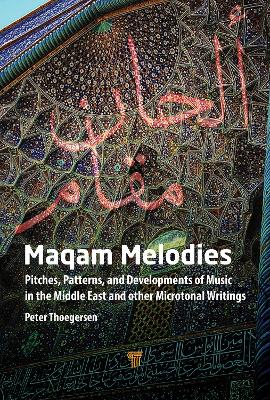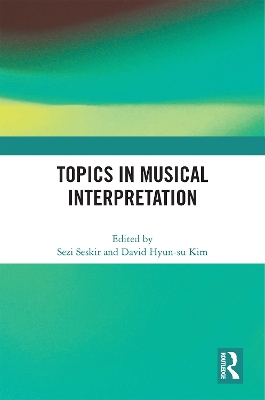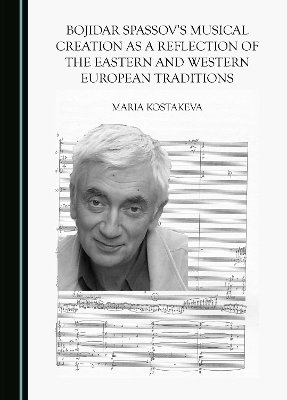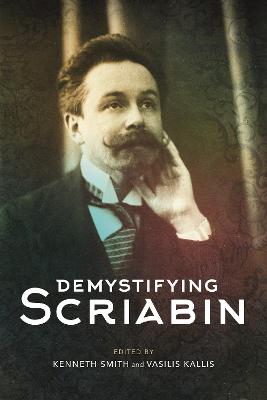Modes of Communication in Stravinsky's Works
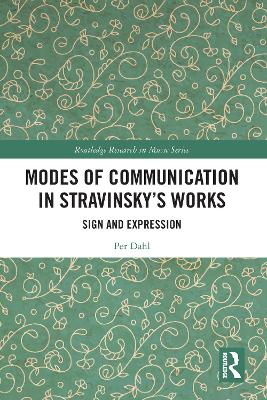 portes grátis
portes grátis
Modes of Communication in Stravinsky's Works
Sign and Expression
Dahl, Per
Taylor & Francis Ltd
12/2021
222
Dura
Inglês
9781032111087
15 a 20 dias
453
Descrição não disponível.
Introduction
Part I: Sign and expression in communication
1 Prelude
1.1. The point of departure
1.2. Discourses of a musical work
2 The multi-layered triad
2.1 Ogden
2.2 Agawu
2.3 A multi-layered triad
2.4 Literacy
2.5 Bacon
2.6 A complete communication model
3 Stravinsky's background and languages
3.1 St. Petersburg
3.2 Suisse/France
3.3 Religion
3.4 America
4 The Aesthetics
4.1 A grid
4.2 Quotes from Stravinsky
4.3 Comments and critiques of Stravinsky's aesthetics
4.4 Adorno
5 The Logics
5.1 The operational grid
5.2 Some aspects from semiotics and linguistics
5.3 Some statements from Stravinsky
5.4 Bacon's idols
6 The Ethics
6.1 The ethical grid
6.2 The listening process
6.3 The composer in action
7 Postlude
Part II: Modes of Communication in Stravinsky's music
8 Notation
9 Music notation and literacy in music: a historical approach
10 A study of Stravinsky's notation practice: an empirical approach
10.1 Design
10.2 Results
11 Vocabulary, concepts and adjustments: a semiotic approach
12 Musicians' music reading practices: a cognitive approach
12.1 Music reading
12.2 Approaching the music notation
12.3 Elements in Stravinsky's notation practice
13 Stravinsky's recordings and performances: a critical approach
13.1 The composer as performer
13.2 Some case studies
13.3 Reliability and validity
Conclusion
Appendices:
1 Work categories
2 Vocabulary
3 Works in the Serial period
4 Shorted and stretched notes
Part I: Sign and expression in communication
1 Prelude
1.1. The point of departure
1.2. Discourses of a musical work
2 The multi-layered triad
2.1 Ogden
2.2 Agawu
2.3 A multi-layered triad
2.4 Literacy
2.5 Bacon
2.6 A complete communication model
3 Stravinsky's background and languages
3.1 St. Petersburg
3.2 Suisse/France
3.3 Religion
3.4 America
4 The Aesthetics
4.1 A grid
4.2 Quotes from Stravinsky
4.3 Comments and critiques of Stravinsky's aesthetics
4.4 Adorno
5 The Logics
5.1 The operational grid
5.2 Some aspects from semiotics and linguistics
5.3 Some statements from Stravinsky
5.4 Bacon's idols
6 The Ethics
6.1 The ethical grid
6.2 The listening process
6.3 The composer in action
7 Postlude
Part II: Modes of Communication in Stravinsky's music
8 Notation
9 Music notation and literacy in music: a historical approach
10 A study of Stravinsky's notation practice: an empirical approach
10.1 Design
10.2 Results
11 Vocabulary, concepts and adjustments: a semiotic approach
12 Musicians' music reading practices: a cognitive approach
12.1 Music reading
12.2 Approaching the music notation
12.3 Elements in Stravinsky's notation practice
13 Stravinsky's recordings and performances: a critical approach
13.1 The composer as performer
13.2 Some case studies
13.3 Reliability and validity
Conclusion
Appendices:
1 Work categories
2 Vocabulary
3 Works in the Serial period
4 Shorted and stretched notes
Este título pertence ao(s) assunto(s) indicados(s). Para ver outros títulos clique no assunto desejado.
Knowledge Acquisition;Performer's Performance;Pierrot Lunaire;Stravinsky's Works;Performer's Level;Multi-layered Model;Tempo Character;Serial Period;Stravinsky's Scores;Performer's Interpretations;Neoclassical Period;Stravinsky's Music;Robert Craft;Neoclassical Works;Musical Rhetoric Figure;Traditional Notation System;Composer's Idea;Pater Noster;Notation Practice;Absolute Music;Metronome Marking;Round Window;Eye Hand Span;Kenner Und Liebhaber;Basilar Membrane
Introduction
Part I: Sign and expression in communication
1 Prelude
1.1. The point of departure
1.2. Discourses of a musical work
2 The multi-layered triad
2.1 Ogden
2.2 Agawu
2.3 A multi-layered triad
2.4 Literacy
2.5 Bacon
2.6 A complete communication model
3 Stravinsky's background and languages
3.1 St. Petersburg
3.2 Suisse/France
3.3 Religion
3.4 America
4 The Aesthetics
4.1 A grid
4.2 Quotes from Stravinsky
4.3 Comments and critiques of Stravinsky's aesthetics
4.4 Adorno
5 The Logics
5.1 The operational grid
5.2 Some aspects from semiotics and linguistics
5.3 Some statements from Stravinsky
5.4 Bacon's idols
6 The Ethics
6.1 The ethical grid
6.2 The listening process
6.3 The composer in action
7 Postlude
Part II: Modes of Communication in Stravinsky's music
8 Notation
9 Music notation and literacy in music: a historical approach
10 A study of Stravinsky's notation practice: an empirical approach
10.1 Design
10.2 Results
11 Vocabulary, concepts and adjustments: a semiotic approach
12 Musicians' music reading practices: a cognitive approach
12.1 Music reading
12.2 Approaching the music notation
12.3 Elements in Stravinsky's notation practice
13 Stravinsky's recordings and performances: a critical approach
13.1 The composer as performer
13.2 Some case studies
13.3 Reliability and validity
Conclusion
Appendices:
1 Work categories
2 Vocabulary
3 Works in the Serial period
4 Shorted and stretched notes
Part I: Sign and expression in communication
1 Prelude
1.1. The point of departure
1.2. Discourses of a musical work
2 The multi-layered triad
2.1 Ogden
2.2 Agawu
2.3 A multi-layered triad
2.4 Literacy
2.5 Bacon
2.6 A complete communication model
3 Stravinsky's background and languages
3.1 St. Petersburg
3.2 Suisse/France
3.3 Religion
3.4 America
4 The Aesthetics
4.1 A grid
4.2 Quotes from Stravinsky
4.3 Comments and critiques of Stravinsky's aesthetics
4.4 Adorno
5 The Logics
5.1 The operational grid
5.2 Some aspects from semiotics and linguistics
5.3 Some statements from Stravinsky
5.4 Bacon's idols
6 The Ethics
6.1 The ethical grid
6.2 The listening process
6.3 The composer in action
7 Postlude
Part II: Modes of Communication in Stravinsky's music
8 Notation
9 Music notation and literacy in music: a historical approach
10 A study of Stravinsky's notation practice: an empirical approach
10.1 Design
10.2 Results
11 Vocabulary, concepts and adjustments: a semiotic approach
12 Musicians' music reading practices: a cognitive approach
12.1 Music reading
12.2 Approaching the music notation
12.3 Elements in Stravinsky's notation practice
13 Stravinsky's recordings and performances: a critical approach
13.1 The composer as performer
13.2 Some case studies
13.3 Reliability and validity
Conclusion
Appendices:
1 Work categories
2 Vocabulary
3 Works in the Serial period
4 Shorted and stretched notes
Este título pertence ao(s) assunto(s) indicados(s). Para ver outros títulos clique no assunto desejado.
Knowledge Acquisition;Performer's Performance;Pierrot Lunaire;Stravinsky's Works;Performer's Level;Multi-layered Model;Tempo Character;Serial Period;Stravinsky's Scores;Performer's Interpretations;Neoclassical Period;Stravinsky's Music;Robert Craft;Neoclassical Works;Musical Rhetoric Figure;Traditional Notation System;Composer's Idea;Pater Noster;Notation Practice;Absolute Music;Metronome Marking;Round Window;Eye Hand Span;Kenner Und Liebhaber;Basilar Membrane

